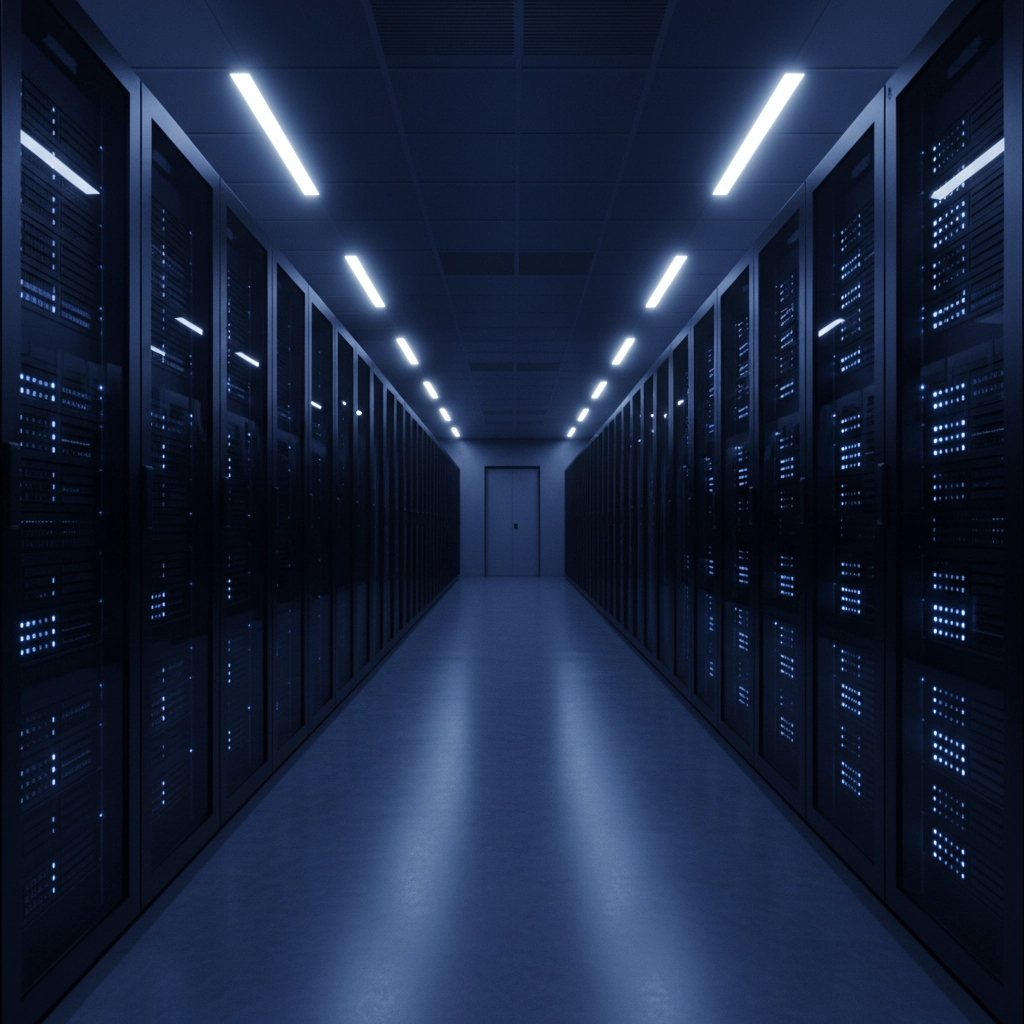This morning, millions of Australians woke up to find their favourite apps weren’t working. Snapchat wouldn’t send messages, Netflix was buffering endlessly, and even banking apps were throwing error messages. The culprit? A single technical failure at Amazon Web Services (AWS) that rippled across the globe, taking down everything from social media platforms to government websites.
If you’ve never heard of AWS, you’re not alone – but you’ve definitely used it. Let’s break down what happened, why it mattered so much, and what it means for Australian businesses like yours.
What Is AWS (And Why Should You Care)?
Amazon Web Services isn’t just about online shopping. It’s the backbone that powers a huge chunk of the internet. Think of AWS as a massive digital landlord – instead of renting office space, companies rent computer power, storage, and all the technical infrastructure they need to run their websites and apps.
When you watch Netflix, check your bank balance, or scroll through social media, there’s a good chance you’re actually connecting to servers owned and operated by AWS. They’ve become so dominant that roughly one-third of all cloud computing happens on their systems.
For Australian businesses, this matters because AWS hosts everything from small local websites to major enterprise applications. If you’re using any modern business software – customer management systems, accounting platforms, communication tools – there’s a fair chance it’s running on AWS infrastructure, even if you don’t realise it.
What Went Wrong This Morning
At around 6:50 PM yesterday (Australian Eastern Time), something called a “DNS resolution failure” occurred in AWS’s DynamoDB service. Now, before your eyes glaze over – let’s explain this in simple terms.
DNS is like the internet’s phone book. When you type “google.com” into your browser, DNS translates that into a numerical address that computers can actually understand. DynamoDB is one of AWS’s core database services that thousands of applications rely on to store and retrieve information.
When the DNS system for DynamoDB failed, it was like the phone book suddenly having wrong numbers for half the city. Applications couldn’t find the databases they needed, and everything started falling over like dominoes.
The problem was centred in AWS’s “US-EAST-1” region – a cluster of data centres in Northern Virginia that serves as a major hub for global internet traffic. When this single region hiccupped, the effects were felt worldwide.
The Domino Effect: How One Region Broke the Global Internet
Here’s where things get really eye-opening. Within hours of the AWS failure, major platforms across every industry started experiencing problems:
Social Media and Communication:
- Snapchat users couldn’t send messages
- Signal messaging app went down
- Even business communication tools like Slack experienced issues
Financial Services:
- Banking apps including major Australian banks
- Investment platforms like Robinhood and Coinbase
- Payment systems like Venmo
Entertainment and Gaming:
- Netflix streaming interrupted
- Gaming platforms like Fortnite and Roblox kicked players offline
- Prime Video (Amazon’s own service) stopped working
Government and Essential Services:
- UK tax office website crashed
- Various government portals became inaccessible
- Educational platforms disrupted
The truly staggering part? This wasn’t because these companies were poorly managed or had bad technology. Many of them had backup systems and disaster recovery plans. The problem was that they were all depending on the same underlying infrastructure.
The Illusion of the “Distributed” Cloud
When we hear about “the cloud,” it sounds wonderfully distributed and resilient. Your data is “in the cloud” – safely stored across multiple locations, always accessible, never tied to a single point of failure.
The reality is quite different. While cloud providers do have data centres around the world, the internet has become surprisingly centralised around just a few major players:
- Amazon Web Services (AWS) – Controls about 32% of the global cloud market
- Microsoft Azure – About 23% market share
- Google Cloud Platform – Around 10% market share
Even more concerning, within each of these providers, certain regions become critical hubs. AWS’s US-EAST-1 region, for example, is often the default choice for new applications and serves as the primary location for many core services.
This concentration means that what should be a distributed, resilient system actually has some very significant single points of failure. When one of these critical regions goes down, it can take a substantial portion of the internet with it.
What This Means for Australian Businesses
As an Australian business owner, you might be thinking, “This happened in America – how does it affect me?” The answer is: more than you might expect.
Your Business Tools Are Probably Connected
Most modern business software relies on cloud infrastructure. Your customer relationship management (CRM) system, accounting software, email platform, and website hosting – they’re all likely running on one of the major cloud providers. When AWS (or Microsoft or Google) has problems, your business tools can become unavailable, even if your local internet connection is working perfectly.
Customer Expectations Don’t Account for Global Outages
Your customers don’t know or care that your business app stopped working because of a technical failure in Virginia. They just know they can’t access your service when they need it. In today’s always-on world, even a few hours of downtime can damage customer relationships and cost revenue.
Supply Chain Dependencies
Your business might not directly use AWS, but your suppliers, payment processors, shipping partners, or other critical services probably do. When major cloud infrastructure fails, it can disrupt your entire business ecosystem, even if your own systems are working fine.
The Business Risk Nobody Talks About
Here’s the uncomfortable truth: even the biggest, most well-funded companies in the world can be brought to their knees by someone else’s technical problems. Netflix, with all their engineering expertise and resources, couldn’t keep their service running when AWS had issues. If it can happen to them, it can happen to anyone.
This creates a new category of business risk that many companies haven’t fully considered. It’s not just about protecting your own systems from hackers, natural disasters, or hardware failures. You also need to plan for the possibility that the global infrastructure your business depends on might simply stop working for a few hours.
Building Resilience: What Australian SMEs Can Do
The good news is that there are practical steps you can take to protect your business:
Understand Your Dependencies
Make a list of all the critical systems your business relies on. Find out which cloud providers they use. If everything is on the same platform, you’re vulnerable to exactly the kind of outage we saw today.
Plan for Downtime
Have a communication plan ready. How will you update customers if your main systems are down? How will you process orders or handle customer service? Simple planning can make a huge difference.
Consider Multi-Cloud Strategies
For critical applications, consider using services that spread their infrastructure across multiple cloud providers. This isn’t always practical or cost-effective, but for business-critical functions, the extra resilience might be worth the complexity.
Local Backups Still Matter
Yes, the cloud is convenient, but keeping local copies of essential data and having offline processes for critical functions can keep you running when the cloud fails.
Work with Experienced Partners
The complexity of modern cloud infrastructure means that most businesses benefit from working with experienced IT partners who understand these dependencies and can help design more resilient systems.
The Bigger Picture: What Needs to Change
Today’s outage is a wake-up call for the entire tech industry. As more of our economic and social infrastructure moves online, we need to seriously consider whether it’s wise to concentrate so much of it in the hands of so few providers.
Some potential solutions being discussed include:
- Geographic distribution requirements for critical infrastructure
- Interoperability standards that make it easier to switch between providers
- Regulatory frameworks that treat major cloud providers like the critical infrastructure they’ve become
- Investment in alternative architectures that are truly distributed rather than centralised
Moving Forward: Practical Cloud Strategy for Australian Business
The lesson for Australian SMEs isn’t to avoid the cloud – it’s to be smart about how you use it. Cloud computing offers tremendous benefits in terms of cost, flexibility, and capability. But like any powerful tool, it needs to be used thoughtfully.
At Cloud Computer Company, we help Australian businesses build practical, resilient cloud strategies that don’t put all their eggs in one basket. We understand the local market, the regulatory environment, and the practical constraints that SMEs face.
Whether you’re just starting your cloud journey or looking to make your existing setup more resilient, we can help you navigate the complexity and build systems that keep working even when the big players stumble.
The internet isn’t as robust as we’d like to believe, but with the right planning and partners, your business can weather the storms. Today’s outage was a reminder of our dependencies – but it doesn’t have to be a preview of your business’s future vulnerabilities.





